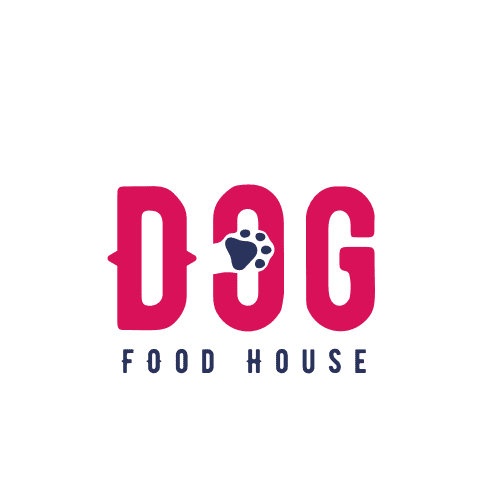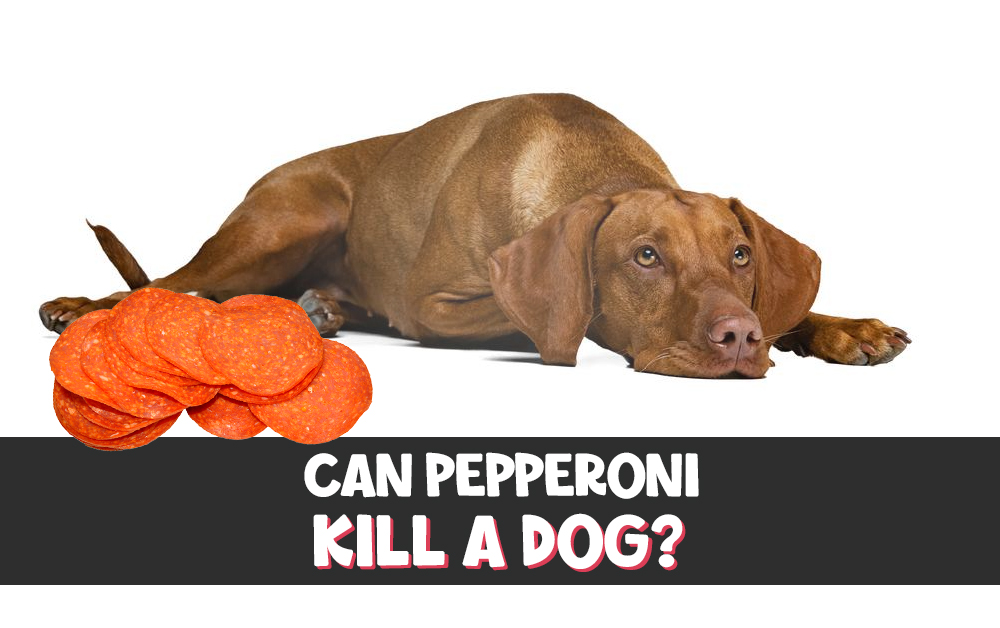Pepperoni, a popular topping for pizza and a common snack is one such food that may pose health risks to dogs.
In this blog post, we will explore the potential dangers of feeding pepperoni to your dog, the symptoms of pepperoni toxicity, and healthier alternatives for treating your furry friend.
The Dangers of Pepperoni for Dogs
While pepperoni is not considered immediately lethal to dogs, it contains several ingredients that can harm your pet, leading to potential health problems.
Here are some reasons why pepperoni can be dangerous for dogs:
High-Fat Content
Pepperoni is a processed meat that is high in fat. A diet rich in high-fat foods can lead to obesity and other health issues in dogs, such as pancreatitis. Pancreatitis is an inflammation of the pancreas that can be painful and potentially life-threatening if left untreated.
High Sodium Content
Processed meats like pepperoni are often high in sodium, which can harm dogs in large quantities. Excessive sodium intake can lead to salt poisoning, causing symptoms like vomiting, diarrhea, tremors, and seizures. Severe cases of salt poisoning can result in coma or death if not treated promptly.
Presence of Spices
Pepperoni is seasoned with various spices, including garlic and onion powder, which can be toxic to dogs. These spices can cause gastrointestinal upset and, in larger quantities, may lead to red blood cell damage and anemia.
Preservatives
Processed meats often contain preservatives like nitrates and nitrites, which can harm dogs. These chemicals can cause oxidative damage to cells and contribute to the development of certain cancers.
Symptoms of Pepperoni Toxicity in Dogs
If your dog has consumed pepperoni, monitoring them closely for any signs of toxicity or adverse reactions is essential. Some symptoms to watch for include:
1. Vomiting
2. Diarrhea
3. Excessive thirst and urination
4. Lethargy
5. Weakness
6. Tremors or seizures
7. Abdominal pain
8. Pale gums (due to anemia)
If you notice any of these symptoms, contact your veterinarian immediately for advice on how to proceed.
Healthier Treat Alternatives for Dogs
Instead of sharing pepperoni with your dog, consider offering them healthier treat options formulated explicitly for canine consumption. Some alternatives include:
· Dog-friendly fruits and vegetables: Many dogs enjoy snacking on fruits and vegetables like apples, carrots, green beans, or blueberries. Always research which fruits and vegetables are safe for dogs before offering them to your pet.
· Lean meats: Offer your dog small pieces of cooked, unseasoned lean meats like chicken, turkey, or beef. Remove any bones, as they can pose a choking hazard or cause internal injuries.
· Commercial dog treats: Many high-quality dog treats are available on the market, catering to various dietary needs and preferences. Look for treats made with natural ingredients, and avoid those with artificial preservatives, colors, or flavors.
· Homemade dog treats: You can prepare homemade dog treats using dog-safe ingredients, allowing you to control the quality and nutritional content. Many recipes are available online for dog-friendly biscuits, chews, and other goodies.
The Importance of a Balanced Diet for Dogs
Feeding your dog a well-balanced, species-appropriate diet is crucial for maintaining their health and well-being.
While occasional treats can be a fun way to bond with your pet and reward good behavior, ensuring that your dog’s primary diet consists of high-quality, nutritionally complete dog food is essential.
Consult with your veterinarian to determine the best diet for your dog based on factors such as age, breed, activity level, and any existing health conditions.
How to Prevent Accidental Ingestion of Harmful Foods
To keep your dog safe from ingesting harmful foods like pepperoni, it’s essential to take precautions and establish some ground rules:
· Store harmful foods out of reach: Keep pepperoni and other potentially dangerous foods stored securely in cabinets or on high shelves where your dog cannot access them.
· Teach the “leave it” command: Training your dog to obey the “leave it” command can help prevent them from eating something harmful, whether it’s pepperoni, chocolate, or a toxic plant.
· Supervise your dog during mealtimes: Keep an eye on your dog while you’re eating to ensure they don’t sneak a bite of your pepperoni pizza or other unsafe foods.
· Educate family members and guests: Make sure everyone in your household, as well as any visitors, understands which foods are harmful to dogs and the importance of not feeding them to your pet.
What to Do If Your Dog Ingests Pepperoni
If your dog has consumed a small amount of pepperoni, it may not cause immediate harm. However, monitoring them closely for any signs of toxicity or adverse reactions is essential.
If your dog has eaten many pepperonis or has any symptoms of pepperoni toxicity, contact your veterinarian or an emergency animal clinic immediately.
They can guide the appropriate action and recommend inducing vomiting, administering activated charcoal, or bringing your dog in for further evaluation and treatment.
Recognizing and Responding to Food Allergies in Dogs
Some dogs may have food allergies or sensitivities triggered by ingesting certain ingredients, including those in pepperoni.
Signs of a food allergy or sensitivity in dogs can include:
· Itching and scratching
· Skin rashes or hot spots
· Ear infections
· Gastrointestinal issues, such as vomiting or diarrhea
· Respiratory problems, like coughing or sneezing
If you suspect your dog has a food allergy or sensitivity, consult your veterinarian. They can help diagnose the issue and recommend an appropriate elimination diet or other management strategies to identify and avoid offending ingredients.
The Risks of Feeding Human Foods to Dogs
While sharing our favorite foods with our dogs can be tempting, it’s important to remember that not all human foods are safe for canine consumption.
In addition to pepperoni, several other human foods can be harmful or toxic to dogs, including:
1. Chocolate
2. Grapes and raisins
3. Onions and garlic
4. Macadamia nuts
5. Avocado
6. Alcohol
7. Caffeine
Feeding your dog human foods can also lead to unhealthy weight gain, dental problems, and imbalances in their nutritional intake.
Instead of offering human foods, focus on providing a balanced, species-appropriate diet and choose dog-safe treats to reward and indulge your pet.
Educating Yourself on Dog Nutrition and Health
One of the best ways to ensure your dog’s health and well-being is to educate yourself on canine nutrition and the potential dangers of certain foods.
By understanding the risks associated with feeding your dog pepperoni and other harmful human foods, you can make informed decisions about what to feed your pet.
· Resources for learning more about dog nutrition and health include:
· Books on canine nutrition and health
· Online articles and blogs from reputable sources
· Consultation with your veterinarian or a canine nutritionist
· Attending seminars or workshops on canine nutrition
By staying informed and proactive about your dog’s dietary needs, you can help prevent health issues and ensure a long, happy, and healthy life for your canine companion.
Factors Affecting Severity of Risk: Determining the Potential Danger
The severity of the risk associated with pepperoni consumption for dogs can vary based on several factors. Understanding these factors is crucial in assessing the potential harm and determining the level of risk involved. Let’s explore the key elements that can influence the severity of risk for dogs.
A. Size and weight of the dog
The size and weight of a dog play a significant role in determining the impact of pepperoni consumption. Smaller dogs are generally more vulnerable to the adverse effects of high-sodium and high-fat foods like pepperoni. Their smaller bodies may struggle to process and metabolize these ingredients effectively, potentially leading to more severe health complications. Conversely, larger dogs may have a higher tolerance and may experience fewer immediate adverse effects.
B. Pre-existing health conditions or sensitivities
Dogs with pre-existing health conditions, such as pancreatitis, gastrointestinal disorders, or kidney problems, may be at a higher risk when consuming pepperoni. These conditions can already strain the dog’s organs and digestive system, making handling the high fat and sodium content in pepperoni more challenging. Additionally, dogs with known sensitivities or allergies to specific ingredients in pepperoni may experience more severe allergic reactions or digestive disturbances.
C. Quantity and frequency of pepperoni consumption
The quantity and frequency of pepperoni consumption can significantly impact the severity of the risk. As an infrequent treat, feeding small amounts of pepperoni occasionally is less likely to cause significant harm than regular or excessive consumption. It’s important to remember that moderation is key. Regularly feeding pepperoni or allowing the dog to consume large quantities can increase the cumulative adverse effects over time, potentially leading to more severe health consequences.
Responsible Pet Ownership and Balanced Nutrition: Nurturing Health and Happiness
Being a responsible pet owner goes beyond providing love and care—it extends to ensuring our furry friends receive balanced nutrition for their overall well-being.
Let’s explore the importance of responsible pet ownership and how it relates to maintaining a healthy and balanced diet for our dogs.
A. Importance of a well-balanced diet for dogs
A nutritious and well-balanced diet is the foundation of a dog’s health. It provides essential nutrients, vitamins, and minerals necessary for optimal growth, development, and maintenance of bodily functions. A balanced diet supports a strong immune system, healthy digestion, shiny coat, and strong bones, helping dogs thrive and enjoy a higher quality of life.
B. Selecting appropriate treats and snacks for dogs
Treats and snacks are enjoyable in our dogs’ lives but should be chosen wisely. Opt for treats specifically formulated for dogs, as they are designed to meet their nutritional needs and are less likely to contain harmful ingredients. Look for treats made from high-quality ingredients, free from artificial additives, excessive salt, and excessive fat content. Additionally, consider the treats’ size and calorie content to ensure they align with your dog’s dietary requirements.
C. Ensuring the overall health and well-being of our furry friends
Responsible pet ownership encompasses a holistic approach to our dogs’ well-being. It involves regular veterinary check-ups, vaccinations, and preventive care to detect and address health issues early on. Regular exercise, mental stimulation, and socialization are also vital components. Alongside these practices, providing a balanced and appropriate diet tailored to the dog’s age, size, and specific needs ensures its nutritional requirements are met and its overall health is optimized.
Final Thoughts
While pepperoni may not be immediately fatal to dogs, it contains ingredients that can pose significant health risks to your canine companion, including high fat and sodium content, potentially toxic spices, and harmful preservatives.
It’s essential to provide your dog with a balanced diet and offer appropriate, dog-safe treats instead of potentially harmful human foods like pepperoni.
Taking precautions to prevent accidental ingestion of harmful foods, monitoring your dog for any signs of toxicity or adverse reactions, and consulting with your veterinarian if you have concerns are crucial to ensure your dog’s safety and well-being.
By educating yourself about canine nutrition and understanding the potential dangers of certain foods, you can make informed decisions to support your dog’s health and happiness.

